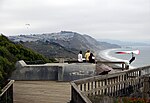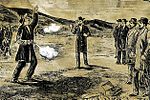Olympic Club
The Olympic Club is an athletic club and private social club in San Francisco, California. First named the "San Francisco Olympic Club", it is the oldest athletic club in the United States. Established on May 6, 1860, its first officers were President, G.W. Bell, Secretary, E. Bonnell, Treasurer, H.G. Hanks, and Leader, Arthur Nahl.Its main "City Clubhouse" is located in San Francisco's Union Square district, and its three golf courses are in the southwestern corner of the city, at the border with Daly City. The "Lakeside Clubhouse" is located just north of the Daly City border; the two clubhouses are separated by about 10 miles (16 km). The three golf courses are named Lake, Ocean, and Cliffs. Lake and Ocean are 18-hole par-71 courses, and the Cliffs is a nine-hole par-3 course in the bluffs overlooking the Pacific Ocean. All three venues are lined with many trees (almost 40,000 on the Lake course) and offer views of the Golden Gate Bridge and Golden Gate Park. The United States Golf Association recognizes the Olympic Club as one of the first 100 golf clubs established in the United States. In November 2017, it was announced that Olympic Club would host the 2033 Ryder Cup.
Excerpt from the Wikipedia article Olympic Club (License: CC BY-SA 3.0, Authors).Olympic Club
Skyline Boulevard,
Geographical coordinates (GPS) Address Phone number Website External links Nearby Places Show on map
Geographical coordinates (GPS)
| Latitude | Longitude |
|---|---|
| N 37.709 ° | E -122.495 ° |
Address
Olympic Club Golf Course
Skyline Boulevard
94132
California, United States
Open on Google Maps



